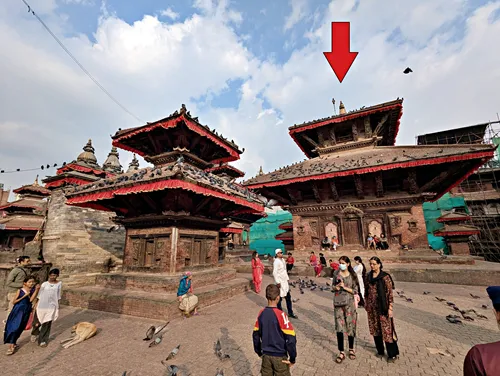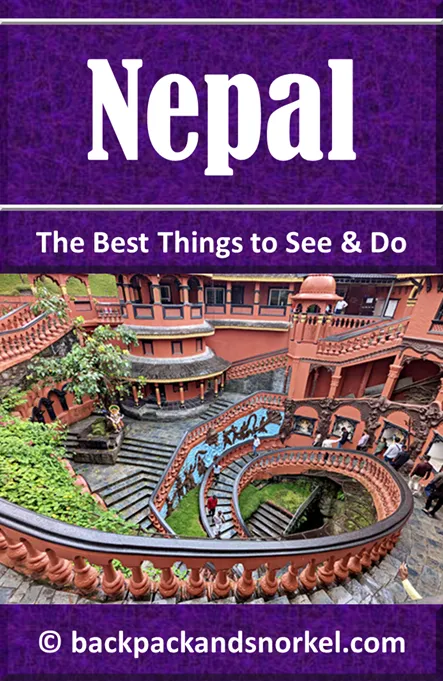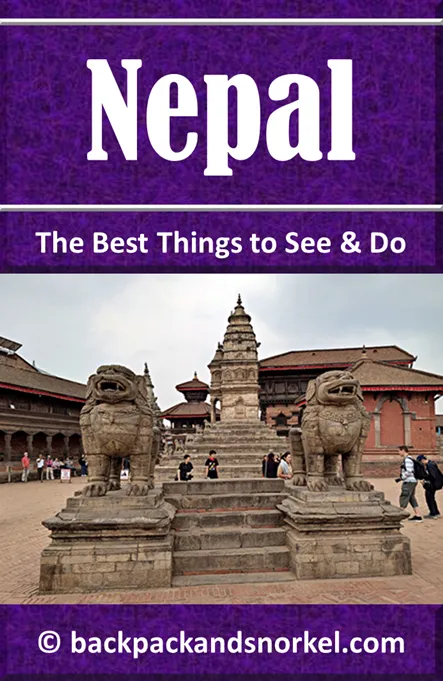Exploring Jagannath Temple: A Historical Landmark with Unique Erotic Carvings in Kathmandu Durbar Square - Nepal Purple Travel Guide
(map, reviews)
This is Premium Content! To access it, please download our
Backpack and Snorkel Purple Travel GuideBehind the King Pratap Malla Column, stands one large temple and, to the left side (north), three smaller temples. The roofs of all four temples are visited by hundreds of pigeons. The largest of the four temples, Jagannath Temple, is your next destination.
Jagannath Temple in Kathmandu Durbar Square is a 16th-century Hindu temple dedicated to Lord Jagannath. As one of the oldest and most artistically rich temples in the square, it is known for its unique wooden carvings and spiritual importance.
The Jagannath Temple is not open for visitors.

Here at Backpack and Snorkel Travel Guides, we typically promote self-guided walking tours.
But we realize that not everybody likes to walk by themselves in a foreign city. So, just in case that you rather go with ab guide: NO PROBLEM! Please see the Viator tours below.
free GuruWalk tours
paid Viator tours
Origin of the name Jagannath Temple
The temple is dedicated to Lord Jagannath, a form of Lord Vishnu revered especially in eastern India and Nepal.
The name ‘Jagannath’ is derived from Sanskrit, meaning ‘Lord of the Universe’ (Jagat = world/universe, Nath = lord). In this context, the deity is seen as a protector and sustainer of cosmic order, making the temple a spiritually important site for Vaishnavite devotees.
History and Architecture of Jagannath Temple
The Jagannath Temple dates back to the 16th century, built during the reign of King Mahendra Malla, one of the prominent rulers of the Malla Dynasty , who ruled from 1560 to 1574. It is one of the oldest structures in Durbar Square and has withstood centuries of natural and political upheaval.
Architecturally, the temple is renowned for its intricately carved erotic wooden struts, which depict a wide range of symbolic and mythological figures. These carvings reflect a traditional belief in the connection between creation, divinity, and fertility. The temple follows a two-tiered pagoda style, common in Newar temple design, with a brick base and a tiered roof supported by beautifully detailed woodwork.
Back to your self-guided tour
Author: Rudy at Backpack and Snorkel
Bio: Owner of Backpack and Snorkel Travel Guides. We create in-depth guides to help you plan unforgettable vacations around the world.
Other popular Purple Travel Guides you may be interested in:
Like this Backpack and Snorkel Purple Travel Guide? Pin these for later:





